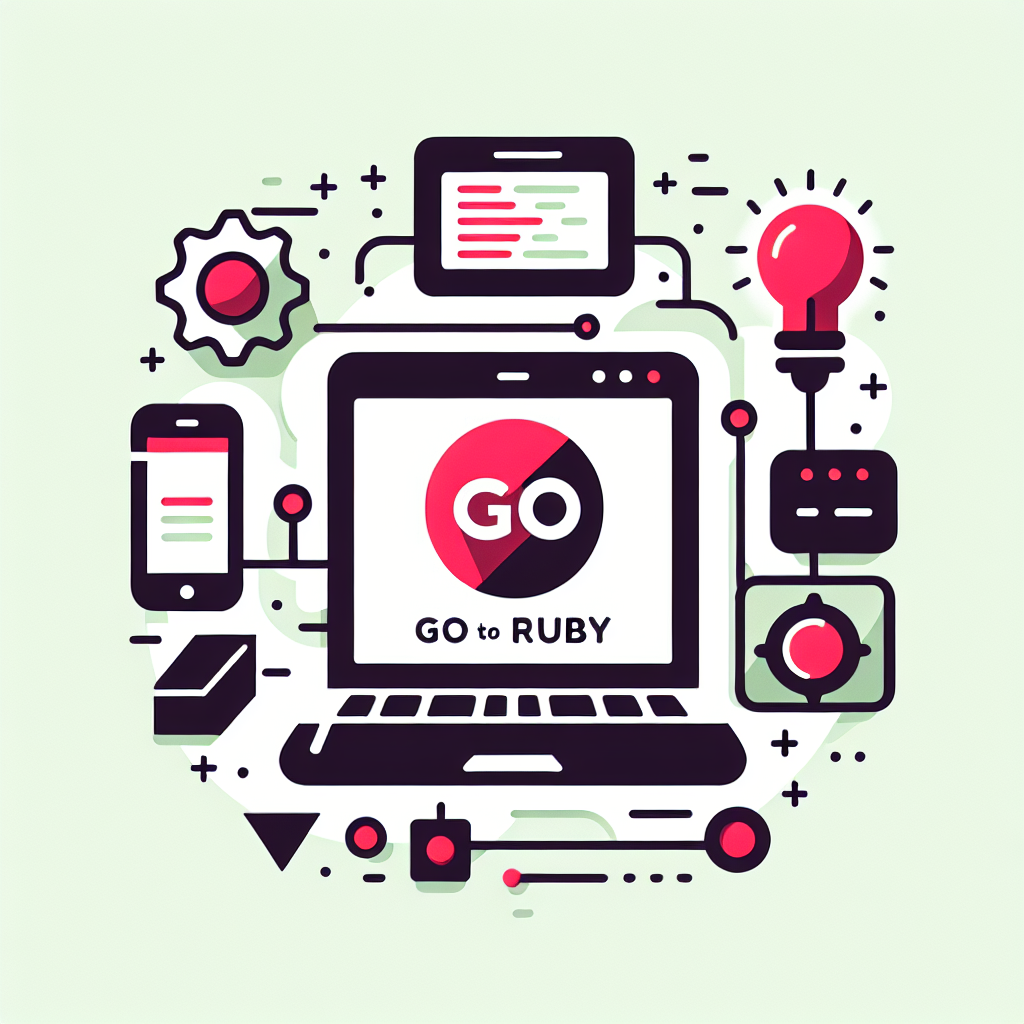Master Ruby Fast: Your Ultimate Go to Ruby Tool
Discover the ultimate Go to Ruby tool for seamless Ruby programming. Enhance your coding efficiency with intuitive features and streamline your development process.
Source Code
Converted Code
Output will appear here...
Go to Ruby is a dynamic tool designed to streamline Ruby programming, enhancing efficiency and productivity for developers. Perfect for both beginners and seasoned coders, it offers intuitive navigation and comprehensive code insights, reducing debugging time and improving code quality. Ideal for web development projects, this tool supports seamless integration with popular Ruby frameworks, ensuring a smooth development workflow. Explore the benefits of Go to Ruby and elevate your coding experience today.

Go to Ruby: Seamlessly Transitioning from Go to Ruby Link to this section #
Switching from Go to Ruby can enhance your programming versatility, leveraging Ruby's dynamic nature and rich ecosystem. Whether you're a seasoned Go developer or just starting, here's how you can effectively transition to Ruby.
Key Differences and Similarities Link to this section #
- Syntax: Unlike Go’s static typing, Ruby is dynamically typed, allowing for more flexibility but requiring careful runtime error management.
- Concurrency: Go’s goroutines offer concurrent execution, while Ruby uses threads and fibers, which are lightweight but may not match Go's performance in concurrent processing.
- Package Management: RubyGems is Ruby's package manager, akin to Go’s
go mod. To install a gem, use:gem install <gem_name>
Essential Ruby Concepts Link to this section #
Blocks and Procs: Understanding Ruby's blocks and Procs is crucial for functional programming. They are akin to Go’s first-class functions.
# Block example [1, 2, 3].each { |n| puts n * 2 } # Proc example double = Proc.new { |n| n * 2 } puts double.call(5)Dynamic Language Features: Ruby's metaprogramming capabilities allow you to write code that writes code, offering powerful but complex constructs compared to Go’s reflection.
Tools and Resources Link to this section #
Interactive Shell: Use
irb(Interactive Ruby) for testing snippets quickly, similar to Go's Playground.Testing Frameworks: RSpec is popular in the Ruby community for behavior-driven development, comparable to Go’s
testingpackage.# Simple RSpec example describe 'Sum' do it 'adds two numbers' do expect(1 + 1).to eq(2) end endDocumentation: Explore Ruby documentation and Go's official site for comprehensive guides.
Conclusion Link to this section #
Transitioning from Go to Ruby opens new possibilities in web development, scripting, and more. Embrace Ruby's elegance while applying your Go programming principles for a rich coding experience. For further learning, consider resources like Ruby on Rails Guides and Go by Example.
Frequently Asked Questions
What is 'Go to Ruby'?
'Go to Ruby' is likely a term referring to transitioning or switching to using the Ruby programming language from another language or platform. It may involve learning Ruby's syntax, features, and frameworks to effectively develop software applications.
Why should I consider switching to Ruby?
Ruby is known for its simplicity and productivity, making it a popular choice for web development, particularly with the Ruby on Rails framework. It offers a clean and readable syntax, a strong community, and a rich set of libraries and tools that can streamline development processes.
What are the key differences between Ruby and other programming languages?
Ruby emphasizes simplicity and productivity with an elegant syntax. Unlike some languages, Ruby is purely object-oriented and focuses on convention over configuration. It differs in syntax and design philosophy from languages like Python or Java, which can affect how code is structured and maintained.